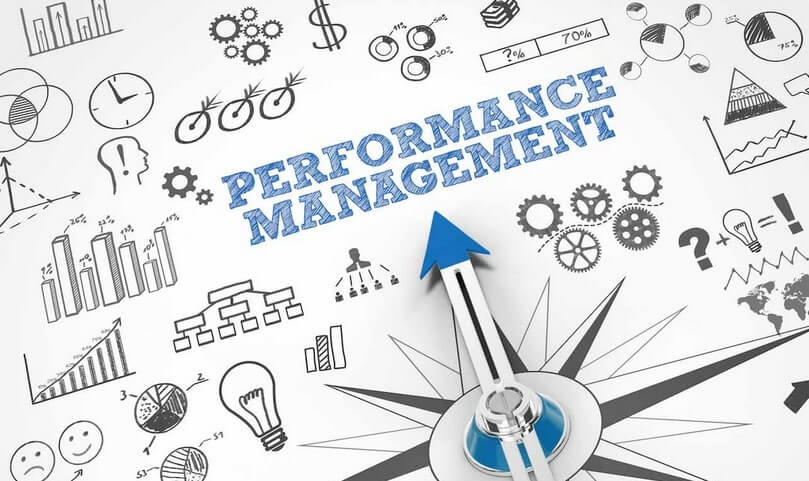Introduction
In the last decade, there has been a lot of innovations in business and technology. As a result, many businesses have started to use IT extensively. However, even though technology has grown so much in that time span, there are still some things that don’t change. For example, it is important for businesses to understand how they are performing so they can make the right decisions when it comes to growth and development. This is where business performance management (BPM) comes into play.
Business performance management framework
Business performance management is a strategy that helps you see the big picture and improve your business. It’s all about measuring, reporting and keeping track of things—and it isn’t just for large companies. Whether you’re running a small business or managing a department at a large company, BPM can help you achieve better results.
The BPM process includes four steps:
- Defining goals and objectives with SMART (specific, measurable, achievable, relevant and time bound) targets to be achieved within certain time frames
- Monitoring progress against these objectives on an ongoing basis with regular reports on key performance indicators (KPIs) by department or function
- Holding managers accountable for meeting their KPIs through regular discussions about progress towards achieving the targeted outcomes
- Using this information to make decisions about how best to allocate resources in order to achieve the desired outcomes
Business performance management involves analyzing data across multiple business processes and providing regular reports on their success rates, while at the same time chasing up any problems to ensure they are dealt with in an efficient manner. It is a vital part of any business’s performance management strategy because it provides the information needed to make informed decisions about how best to allocate resources in order to achieve the desired outcomes. This way it allows companies to ensure that they are meeting customer expectations, which can lead to increased customer satisfaction and loyalty. With BPM, managers can use data to identify areas in which they need to invest more resources, or where they can reduce costs. For example, if a particular department is not meeting its targets for sales of new products, then this might indicate that it needs additional training or support from other departments that could provide it with better marketing materials and advertising campaigns.
Recomended Read: Difference Between KPIs and KRIs
Effective Business Performance Management:
The most effective BPM systems have a clear set of goals and KPIs, a system that tracks and reports on the performance of these goals, and regular reviews to hold managers accountable for achieving them. This involves monitoring the progress being made against key targets, such as sales volumes or customer satisfaction levels. It also involves making decisions about how best to allocate resources in order to achieve the desired outcomes. A well-designed BPM system should be able to answer the following questions:
- What are our key business objectives?
- What are our performance goals, and how will we measure them?
- How do we need to redirect or adjust our strategy in order to achieve these goals?
It’s important to remember that BPM is a process, not just a set of tools. The effectiveness of your BPM system will depend on how well you use it, so it’s important that everyone involved has an understanding of the process and their role in achieving its goals.
The BPM Process This enables managers to make informed decisions about how best to allocate resources in order to achieve the desired outcomes. It also helps organizations identify areas where improvements can be made, such as reducing the time it takes for customers to receive products or services that they have ordered via an online store.
Business performance management (BPM) is the discipline of measuring, analyzing and reporting on business processes to ensure success. It involves looking at data across multiple business processes and providing regular reports on their success rates, while at the same time chasing up any problems to ensure they are dealt with in an efficient manner.
BPM can be applied at all levels of an organization: corporate, business unit or functional level. At each level a different set of metrics will apply but BPM will always involve measuring key performance indicators that indicate whether a process is working as intended or not.
Once you know what your KPIs are then it’s worth taking some time out to consider how you might make improvements in each area before moving onto the next stage in your journey towards becoming more effective as an individual contributor within your team.

Strategic planning, business objectives and monitoring performance
Business Performance Management (BPM) is a management approach that concentrates on strategic planning, business objectives and monitoring performance. The aim of BPM is to align all the resources to achieve long-term goals and company’s strategy. The BPM approach is used by organizations to improve their performance. It helps to identify which activities and processes are critical to the business and then measure them against key performance indicators (KPIs).
BPM uses a variety of techniques, including business intelligence software that analyses data such as sales and customer satisfaction ratings, enabling you to make better decisions based on facts rather than gut feelings or guesswork. BPM is part of the overall management process, which includes strategic planning, business planning and performance monitoring. The purpose of the BPM is to align all the resources to achieve long-term goals and company’s strategy.
KPIs are key
KPIs are important because they help you to monitor your business performance. If a few of your KPIs are trending downward, then this could be a sign that something needs to change in order for the rest of your KPIs to improve as well. You can use key performance indicators to measure the success of your business activities and monitor and report on the progress of your goals. A KPI is a measurable variable used to evaluate performance and/or progress toward an objective, goal or target. Some examples include: sales volume per store; percentage increase in average weekly traffic to website over last quarter; number of new subscribers within target market segment; average time spent per page visited on website; number of competitors reachable within 30-minute drive time
Monitoring and reporting on KPIs, allow managers to get a better understanding of processes across the entire organization so that they can manage them more effectively and take corrective action where necessary.
For example, if your sales team is not reaching its quota, it may be because they aren’t doing a good job of contacting potential customers. When you have access to data about your sales process, you can use it to identify areas where improvements should be made in order for your team to meet their quotas more consistently and efficiently. This will help ensure that everyone is meeting their individual goals while also helping the organization reach its overall goals for revenue generation or customer acquisition.
Align resources; activities, and processes to monitor, measure and improve business performance
An organization can perform better when it aligns its resources; activities, and processes to monitor, measure and improve business performance. BPM includes three interrelated processes in order to achieve strategic coordination and execution of a company’s operations.
- Planning – Planning is done at the corporate level or in departments with a very high degree of autonomy since they are responsible for their own profitability strategies and budgets
- Orchestration – Coordinating different functions within an organization through efficient utilization of resources (people, time etc.)
- Execution – Executing daily tasks based on the plan created during orchestration
Business performance management (BPM) is a management approach that concentrates on strategic planning, business objectives and monitoring performance. It is a process of aligning all the resources to achieve long-term goals and company’s strategy.
BPM includes three interrelated processes in order to achieve strategic coordination and execution of a company’s operations.
- Performance measurement: It refers to the process of collecting and analyzing data on performance dimensions like profitability, efficiency, quality, etc.
- Performance analysis: It refers to the analysis of performance measurements in order to identify areas for improvement.
- Performance improvement: It refers to developing strategies for improving results through changes in processes or systems.
The first element of BPM involves performance measurement.
The first element of Business Performance Management (BPM) is the collection, tabulation and reporting of data relevant to a company’s goals, internal business process or external outcomes.
Performance measurement is an ongoing process that supports informed decision making. It involves tracking progress toward established objectives so you can:
- identify areas for improvement;
- allocate resources efficiently; and
- share results with your team.
The purpose of measurement is to provide feedback on performance. The purpose of analysis is to identify the causes of performance, and the purpose of reporting is to communicate results.
The second element is performance analysis.
Performance analysis is the use of data from the first step for reporting and evaluation purposes for both internal and external stakeholders. Performance analysis will help identify trends in performance, as well as opportunities for improvement.
The third element relates to performance improvement.
Performance improvement is done by using information derived from the previous two steps for decision-making purposes. Performance improvement can be achieved by implementing changes to processes, procedures or systems and is often referred to as continuous improvement.
It’s important to collect and analyze the data in order to determine the effectiveness of a program or organization. It is important to understand where you are now so that you can set goals for improvement and track your progress toward those goals. Analysis refers to assessing a specific program’s impact on its target audience or on organizational outcomes such as profitability or market share. Reporting involves communicating these findings—whether through presentations, reports or other forms of communication—so they will be used by decision makers within an organization.
Conclusion
So, what is Business performance management?
Business performance management is a process by which the work of an organization is managed in a way that maximizes efficiency and effectiveness. It involves setting goals, measuring progress towards those goals, analyzing data to see if they are being met or not and making adjustments accordingly. A clear understanding of these business activities enables decision makers to make better choices regarding how resources are allocated within their organization as well as interact with other businesses at an international level.






